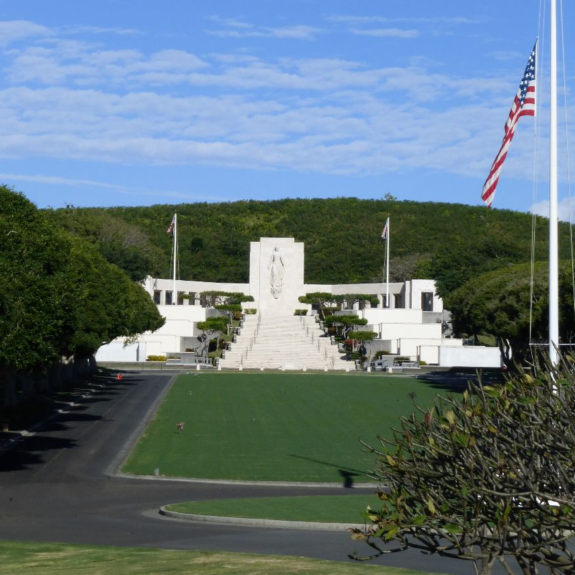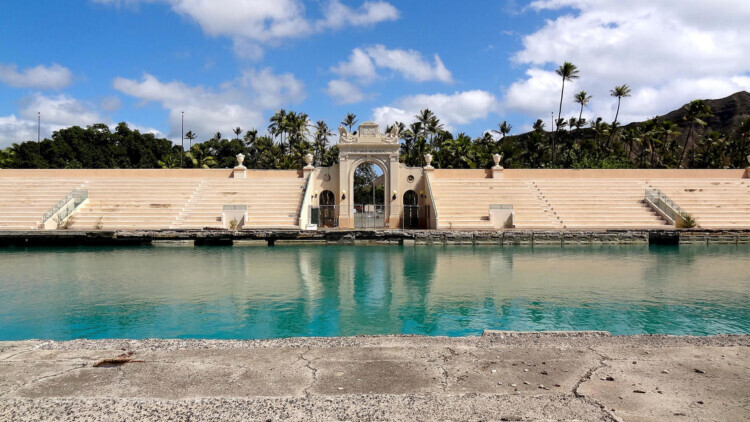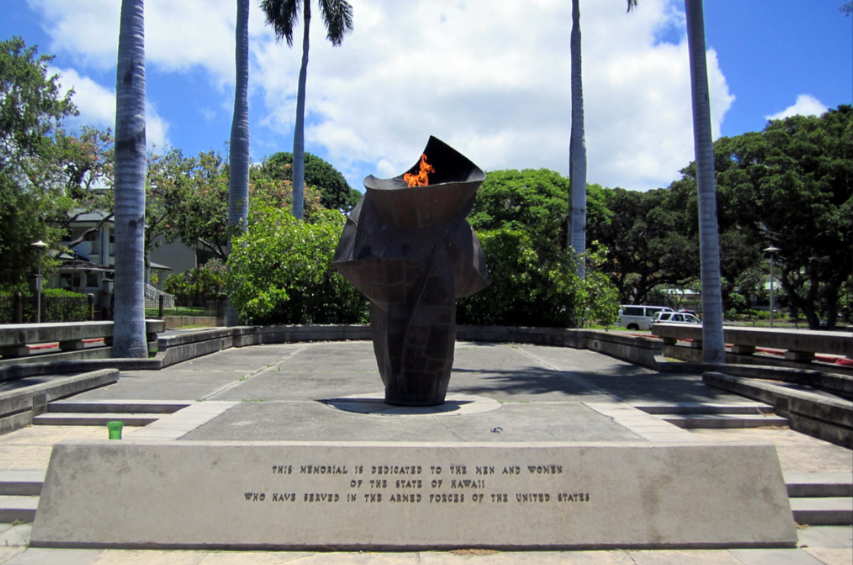Three Aspects of Memorials
By Virgina Murison, AIA
Memorial Day in the United States began during the American Civil War when flowers were placed on the graves of those who died in battle. By the end of the 19th century, May 30th memorial observances for those who fell in the Civil War were held throughout the nation. After World War I, on May 30th, those who died in all U.S. wars were honored. Since 1971, Memorial Day has been a national holiday, commemorated on the last Monday in May.
In Hawai‘i, we remember events and honor people in diverse ways and a wide variety of physical structures. In honor of Memorial Day, we share examples of three physical memorials that represent memory and reflection, action, and symbolism.

Memory and Reflection – The Honolulu Memorial
Memorials can tell a story and provide a place for quiet reflection. An example is the Honolulu Memorial located within the National Memorial Cemetery of the Pacific in Punchbowl on O‘ahu. Dedicated in 1966, Honolulu Memorial honors Americans engaged in three Pacific wars: World War II, Korea, and Vietnam.
At the top of the staircase in the Court of Honor is a statue of Lady Columbia (also known as Lady Liberty or Justice) as well as a chapel for quiet reflection. Flanking the chapel are galleries that depict events of the wars. Descending both sides of the grand staircase, ten Courts of the Missing record the names of over 28,000 service men and women missing in action or lost at sea. The Honolulu Memorial is a place of learning, a place to honor the sacrifices of fellow citizens and a place for quiet reflection.

Active – Waikīkī War Memorial Natatorium
A memorial can be a “living” community resource. Dedicated in 1927 to honor the men and women of Hawai’i who served in World War I, the Waikīkī War Memorial Natatorium was conceived as more than a war memorial. The salt water swimming pool on the beach of Waikīkī once served as a living memorial for people to take part in its long history of indigenous swimming traditions and its Olympic legacy–when it opened on August 24, 1927, Olympic Gold Medalist and “father of modern surfing” Duke Kahanamoku dove into the pool to take the first ceremonial swim. Today, the memorial is one of only a few ocean-water natatoriums left in the world, and the only one of its kind in the United States.
Read more about the Waikiki Natatorium War Memorial

Symbolic – The Eternal Flame
The Eternal Flame is a bronze and copper sculpture dedicated in 1972 to the men and women of the State of Hawai’i who served in the Armed Forces of the United States. It replaced the original flame constructed in 1944. This sculpture was designed by Bumpei Akaji, member 442nd, 100th infantry and is located directly across the street from the Hawai’i State Capitol building in Honolulu. The inscription reads:
This memorial is dedicated to the men and women
Of the State of Hawai‘i
Who Have Served in the Armed Forces of the unites States
Photo of Eternal Flame by Wally Gobetz.
The memorial examples above are war memorials, appropriate on this Memorial Day as we remember those who served and have been lost. Other memorials celebrate people and events of our diverse culture in Hawai‘i.

